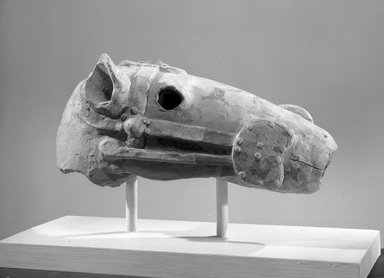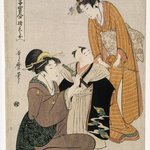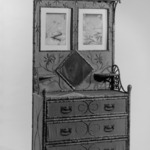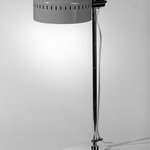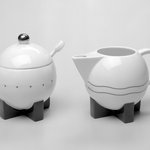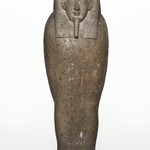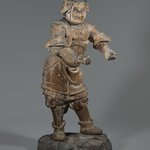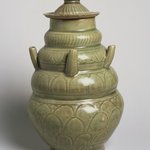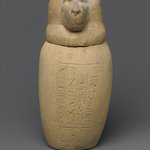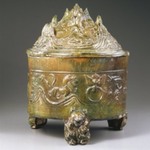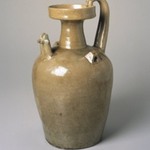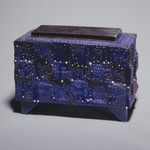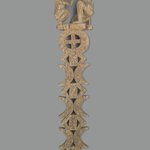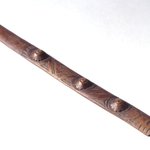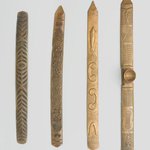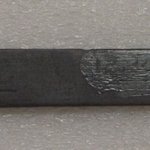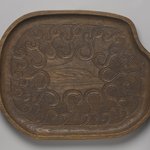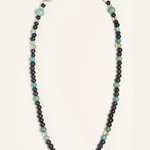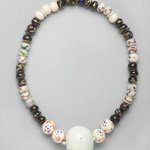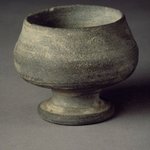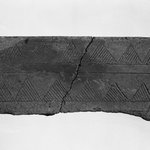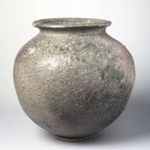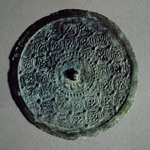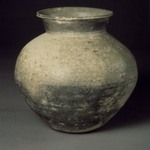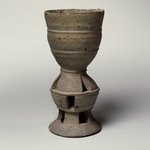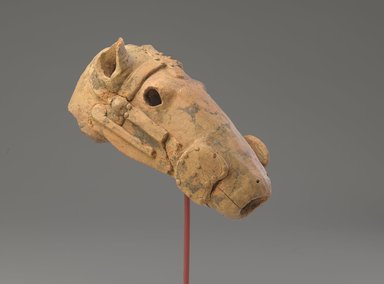
Head from a Haniwa in the Shape of a Horse
Asian Art
On View: Asian Galleries, Arts of Japan, 2nd floor
Clay cylinders called haniwa were set into the ground around the large funerary mounds created during Japan’s Kofun period (circa 300–538 C.E.). Their original purpose was probably to mark and protect the periphery of the tomb. Many haniwa have been decorated to resemble houses, animals, or people; these likely represented the entourage and possessions that the deceased would need in the afterlife.
The figural haniwa appears to represent a female of high status, with jewelry and a shelf-like headdress. It is unusual that the pigment on her face and body survives. Because of her distinctive facial markings, she is sometimes identified as a holy woman or shaman, but it may be that many different types of women marked their faces during this period.
The figural haniwa appears to represent a female of high status, with jewelry and a shelf-like headdress. It is unusual that the pigment on her face and body survives. Because of her distinctive facial markings, she is sometimes identified as a holy woman or shaman, but it may be that many different types of women marked their faces during this period.
MEDIUM
Low fired earthenware pottery, reassembled from fragments
DATES
5th–6th century
PERIOD
Kofun Period
DIMENSIONS
6 x 5 1/2 x 12 1/4 in. (15.2 x 14 x 31.1 cm) (show scale)



COLLECTIONS
Asian Art
ACCESSION NUMBER
61.233
CREDIT LINE
Gift of Isamu Noguchi
CATALOGUE DESCRIPTION
Low fired pottery horse head (haniwa)
Earthenware haniwa in the form of a horse head with bridle of applied boss and strip decoration.
Condition: Left ear void, right ear chipped. Back of head and most of left side is badly worn. Some repair to bridle straps at right side.
EXHIBITIONS
MUSEUM LOCATION
This item is on view in Asian Galleries, Arts of Japan, 2nd floor
CAPTION
Head from a Haniwa in the Shape of a Horse, 5th–6th century. Low fired earthenware pottery, reassembled from fragments, 6 x 5 1/2 x 12 1/4 in. (15.2 x 14 x 31.1 cm). Brooklyn Museum, Gift of Isamu Noguchi, 61.233. Creative Commons-BY (Photo: Brooklyn Museum, 61.233_PS9.jpg)
IMAGE
overall, 61.233_PS9.jpg. Brooklyn Museum photograph, 2014
"CUR" at the beginning of an image file name means that the image was created by a curatorial staff member. These study images may be digital point-and-shoot photographs, when we don\'t yet have high-quality studio photography, or they may be scans of older negatives, slides, or photographic prints, providing historical documentation of the object.
RIGHTS STATEMENT
Creative Commons-BY
You may download and use Brooklyn Museum images of this three-dimensional work in accordance with a Creative Commons license. Fair use, as understood under the United States Copyright Act, may also apply.
Please include caption information from this page and credit the Brooklyn Museum. If you need a high resolution file, please fill out our online application form (charges apply).
For further information about copyright, we recommend resources at the United States Library of Congress, Cornell University, Copyright and Cultural Institutions: Guidelines for U.S. Libraries, Archives, and Museums, and Copyright Watch.
For more information about the Museum's rights project, including how rights types are assigned, please see our blog posts on copyright.
If you have any information regarding this work and rights to it, please contact copyright@brooklynmuseum.org.
RECORD COMPLETENESS
Not every record you will find here is complete. More information is available for some works than for others, and some entries have been updated more recently. Records are frequently reviewed and revised, and we welcome any additional information you might have.
